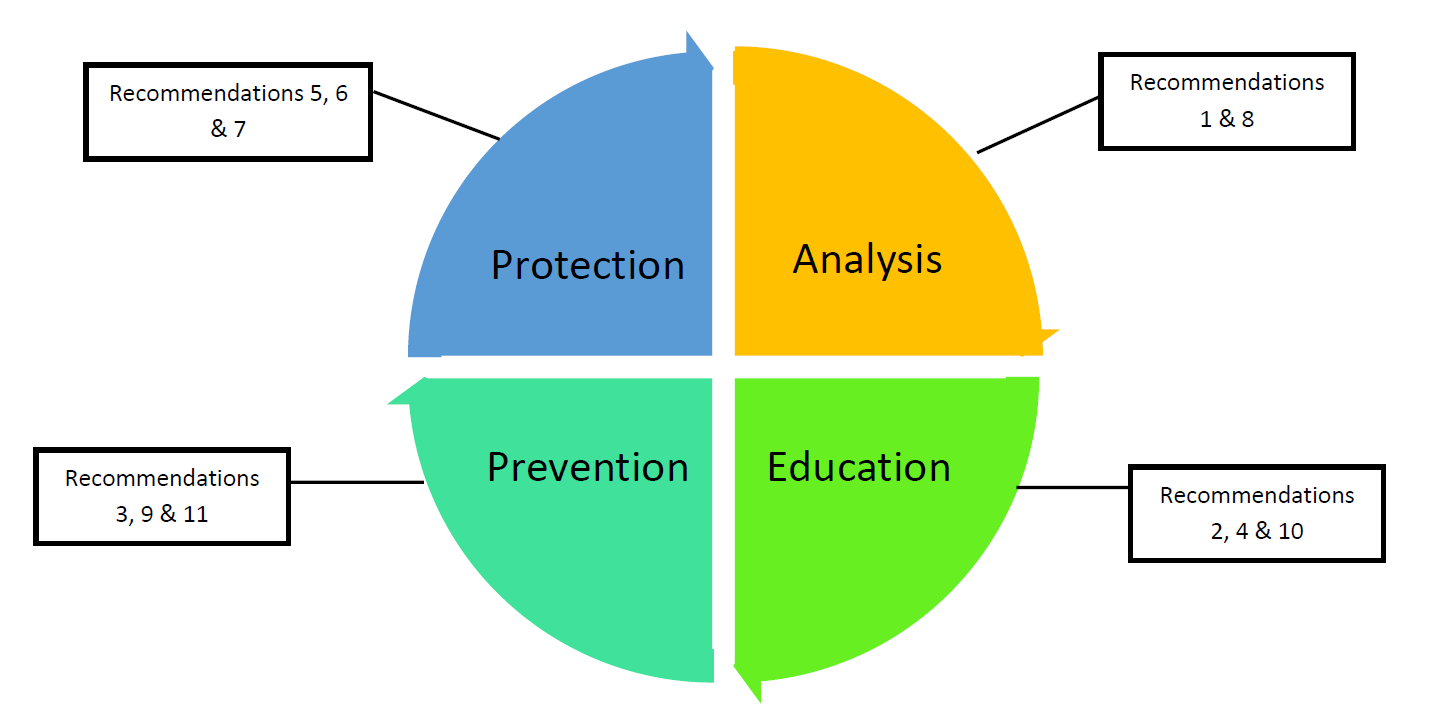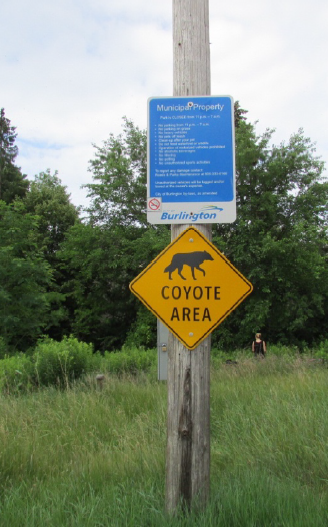 By Staff
By Staff
August 26th, 2022
BURLINGTON, ON
The Gazette published a report yesterday on recommendations a citizens committee gave to Burlington Mayor Marianne Meed Ward and City Manager Tim Commisso.
Within the report were a number of recommendations that we think were important enough to be made public. They are set out below; they amount to a consultants report that didn’t cost the city a dime.
 Those recommendations are set out below
Those recommendations are set out below
1. Conduct an impact analysis by neighbourhoods to identify various controls that should be implemented to safeguard residents, children and pets from coyote attacks.
BOCM has identified several “hot spot” neighbourhoods in both Oakville and Burlington which have shown an unusually high number of coyote sightings and incidents. These neighbourhoods are as follows:
- Samuel Curtis Estates in West Oakville;
- Wilmot Creek Park in West Oakville/East Burlington;
- Lakeshore Woods in West Oakville;
- Sheldon Creek Trail system bordering Samuel Curtis Estates & Lakeshore Woods in West Oakville;
- Shell Park in West Oakville;
- South Shel Park & Beach Trails in West Oakville;
- Burloak Waterfront Park in West Oakville/East Burlington;
- Mohawk Gardens/St. Patrick’s R.C. School in East Burlington;
- Bromley Park in East Burlington;
- Sherwood Forest Park in East Burlington;
- Pineland Public School in East Burlington;
- Paletta Estates in Burlington;
- Nelson Park in Burlington (including Shoreacres Road);
- John Tuck Public School in
Many of these areas are adjacent to woodlots. The proximity of playgrounds to woodlots which is where coyotes den is particularly problematic. Many young children play in these areas, and the potential for interactions between coyotes and young people is extremely high. In all of West Oakville there are no coyote warning signs whatsoever.

SIGN AT ENTRANCE TO SHELDON CREEK TRAIL, THE SITE OF SEVERAL COYOTE ATTACKS. THIS IS A HEAVILY UTILIZED TRAIL AND CHILDREN’S PLAYGROUND IMMEDIATELY NEXT TO TRAIL ENTRANCE. COYOTES KNOWN TO USE THIS ENTRANCE TO LEAVE THE TRAIL SYSTEM AS THEY MAKE THEIR WAY TO THE LAKE VIA WILMOT ROAD AND STEVENSON ROAD.
2. Improve both the quantity and quality of signage relating to coyotes, and ensure it offers meaningful information on what to do in the event of sightings.
There are absolutely no coyote warning signs in Bronte and West Oakville, and the level of coyote signage currently in use in Burlington is vague and offers little in the way of useful information. BOCM believes that much more comprehensive and detailed signage is required that includes the following:
- Warning signs on the prevalence of coyotes;
- Encourage park visitors to call 911 in cases of emergencies or attacks;
- Clear prohibitions aimed at discouraging the feeding wildlife;
- Specific directions on what to do if a coyote stalks someone;
- Advice on how to properly haze
Suffice to say that a picture of a coyote may provide a warning but it offers no viable information as to what to do when one is sighted or attacks. Oakville/Burlington need to follow the lead of Mississauga and install billboards, or at the least temporary mobile signs warning people of coyotes in hotspots and what to do.
Appendix A includes a cross-section of different pictures taken recently throughout Oakville and Burlington that clearly demonstrates either the lack of proper signage or a lack of relevant information.
3. Current municipal by-laws should be amended to permit the laying of charges and assessment of fines for persons who feed coyotes.
Current direction from civic officials places an onus upon residents not to feed wildlife. Unfortunately, this advice is not reinforced with appropriate fines that act as a significant deterrent.
It is our understanding that the City of Burlington By-Law 083-2015 enacted September 28th,2015 provides for a fine of $100 for any resident found feeding wildlife. In the case of the Town of Oakville we examined By-Law 2018-006 and were unable to find any fine for feeding wildlife. The fine in the City of Toronto is $365.
BOCM maintains that a $500 fine should be imposed upon any resident or person who is identified feeding wildlife. We believe that a similar fine should be assessed in cases where residents carelessly discard food waste and scraps that become a food source for coyotes, raccoons, etc.
4. Provide appropriate coyote management education in schools and parks that border creeks.
We believe that more prescriptive and defined education messages should be used to communicate the potential threat caused by coyotes. We believe that By- Law Officers should be routinely tasked with visiting schools in “hot spot” neighbourhoods to educate teachers, students and administrators about the threats posed by coyotes.
As coyotes are no longer afraid of us hazing must be taught to residents and children. Furthermore, flyers must be sent to every household in high density coyote areas instructing what to do, how to haze, and what to carry as a deterrent.
5. Change municipal by-laws to permit residents to increase fence heights in order to deter coyotes from entering residents’ properties.
Our review indicates that in the City of Burlington the maximum fence height is 2 metres. In the case of the Town of Oakville there is a similar provision, although in certain circumstances it can extend to 2.2 metres.
BOCM believes the current height restriction on fences is inadequate to protect residents from coyotes entering the backyards. We have several reports where residents’ pets in fenced backyards have been attacked by coyotes that have scaled wooden and wire fences.
We believe that in cases where properties are adjacent to “hot spot” areas an exception should be made, and that fence heights should be changed to 3 metres. This would provide a strong deterrent to coyotes from entering properties adjacent to parks while providing protection to homeowners whose pets are in enclosed areas.
6. Permit residents’ whose properties back onto wooded areas to place an awning structure at the top of their fence to prevent coyote jumps.
As was noted in point #5 above, coyotes have the ability to scale fences up to nine feet high. We believe residents whose properties are adjacent to “hot spot” locations should have the ability to erect awnings at the top of their fences to prevent coyote jumps.
7. Request more frequent and nightly bylaw officer visits to wooded areas known to have coyote dens.
BOCM maintains that Animal Control By-Law Officers have a low visibility and profile in the community. We believe that greater efforts should be made to provide nightly patrols in “hot spot” areas where coyotes pose a significant hazard and risk. Increased visibility will reinforce public safety and demonstrate concern for the needs of residents. In particular, better training for animal control and bylaw officers on how to be more empathetic and understanding when dealing with distraught pet owners reporting attacks and killing of their pets would be helpful.
As well, it is important to clearly articulate to residents who to contact in the event of an attack, kill or sighting. Residents are currently confused.
Several schools in Oakville and Burlington have woods that are adjacent to known coyote dens. Below are pictures taken at St. Patrick’s Roman Catholic School on Kenwood Drive, and Pineland Public School on Meadowhill Drive. In these photographs you can clearly see that playgrounds and soccer fields are within close proximity to wooded areas and ravines.
8. Scientifically measure the size of the coyote population in West Oakville, Bronte and Burlington.
Much has been made about the fact that the coyote population is threatened by urbanization. While this may be true, at no time has scientific data been adduced to confirm the actual size of the coyote population in this area.
Until the 1800’s coyotes lived only in the southern prairies of North America, and the southern United States to Mexico. By the late 1800’s they expanded west to the Pacific Ocean, and by the 1900s they had advanced to the Maritimes, the eastern seaboard in the United States, and north to Alaska. Their rapid population growth is a testament to their hardiness and adaptability.
BOCM believes that making unsubstantiated claims that a species is at risk without corroborating evidence to substantiate it is both misleading and untrue. The natural predator of coyotes are humans, but if there are controls on hunting and trapping then the species reproduces unimpeded. Empirically, the number of sightings and interactions with coyotes would infer that the coyote population has migrated south towards the Lake Ontario shoreline and along adjacent creeks. This would suggest that a larger number of them are living in a confined area and in closer proximity to residents.
We believe that a scientific count of the coyote population would be helpful in identifying dens and imposing reasonable controls that would restrict the number of negative interactions with residents and their pets. Recently, attempts have been made in the City of Chicago using radio tracking to determine the size of the coyote population. Estimates suggest that the population in that City is somewhere between 2,000 to 4,000 animals.
BOCM believes that similar activities should be undertaken by bylaw officers using radio control technology. Scientific evidence, not assumptions, are needed in order to develop proactive evidence-based solutions to the coyote population.
9. Institute a program of coyote contraception to limit the size of the coyote population.
Once an assessment has been made of the size of the coyote population BOCM believes that measures should be instituted to control the size of this species.
It should be noted that in addition to the obvious threat presented by bites and attacks coyotes are also known carriers of parasites including mange and, in some instances, rabies. Sarcoptic mange is highly contagious to both dogs and humans, and there are cases where it can be passed from human to human. Rabies is a deadly virus that spreads from the saliva of infected animals. Treatment involves a series of painful shots that eliminate the infection.
Wildlife contraception is not new. It has been applied successfully in various jurisdictions in the United States to control wildlife including deer:
10. Initiate a program of aggressive hazing to instill fear in coyotes.
The concept of aversive conditioning has been pioneered by Collen Cassady St. Clair at the University of Alberta who has been working with the Edmonton Coyote Urban Project. This program is based on the concept of teaching wild animals to mistrust humans and fear people in order to lessen interactions that may result in adverse close contacts or attacks. Certain areas of that City, particularly playgrounds, are considered “no-go” zones, and coyotes seen in these areas are aggressively hazed. One approach that is being utilized involves deploying service dogs to find coyotes, then shooting them with chalk balls fired from paintball guns. Residents are also encouraged to haze coyotes by throwing tennis balls at them.
Because coyotes are no longer afraid of people, we need to teach residents aversive conditioning, and providing this information both on the website and in flyers distributed to households.
- Institute a program of regular pesticide spraying of rats and other vermin consumed by Coyotes in our trail areas and known den areas.
If the food sources for coyotes disappears, so will the coyotes. They will move to other more food abundant areas.
This will become increasingly necessary as urban development to the north of Burlington and Oakville proceeds quickly over the next few years. We will need to have plans in place well in advance to control and manage the coyote population. We all know that the coyotes will move south from Milton and Halton Hills to south Oakville and Burlington so they can be close to Lake Ontario where there is an abundance of shoreline and trail system wildlife.
 SUMMARY
SUMMARY
BOCM maintains that previous coyote management efforts by civic officials have been both inadequate and a substantive public policy failure. Too much onus has been placed on local residents to manage this problem through appeals to refrain from feeding wildlife. While BOCM supports this measure in principle, it is our contention that this measure alone is inadequate. We strongly contend that the time has come for much more proactive control initiatives.
Related news story:
Report om controlling coyote problem gets the brush off from city hall















What are the credentials if BOCM? Are they just a neighborhood group or do any members have credentials that would make them more informed than the civic officials they don’t think are doing enough?
The 2 people and child sent to hospital from a coyote attack should not be a surprise. An urban setting for a wild animal is not sustaniable. They (coyotes) have no predator in this area except man. They are hungry, without fear and will continue to attack us until we cull them.
The mayor and council have to treat this as an emergency
“BOCM maintains that previous coyote management efforts by civic officials have been both inadequate and a substantive public policy failure. Too much onus has been placed on local residents to manage this problem through appeals to refrain from feeding wildlife. While BOCM supports this measure in principle, it is our contention that this measure alone is inadequate. We strongly contend that the time has come for much more proactive control initiatives.”
I totally agree that “too much onus has been placed on local residents to manage this problem”.
However, the same principle seems to apply to the community centres in Burlington . When an instructor at the Senior Centre contracted Covid this summer it was determined by “the leadership team ( which did not include the instructor) that the participants in her class were NOT to be informed that the instructor had Covid (30 participants were in her class the day before she became ill).”
When I questioned the decision of not informing the participants in her class the lengthly email received went into full detail of how the city provided sanitation wipes, along with sanitation stations throughout the building that participants could use, This was in response to my questioning if a15 minute turn around between classes was enough time for staff to wipe down chairs and tables that had to be set up for the different classes and if the microphone system that includes a mouthpiece had been sanitized.
Do we see a pattern emerging-deflect at all cost?